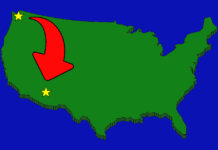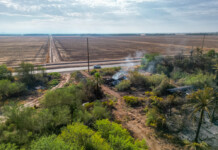
Beware triple digits, monsoons and dust storms: All could be hazardous to your health.
According to the National Weather Service, heat is one of the leading weather-related causes of death in America. Maricopans can’t be too careful.
On the weather report, there always seem to be heat cautions. An excessive-heat advisory is issued when temperatures could reach levels that cause significant discomfort or inconvenience. A warning is reserved for when conditions pose a threat to life.
The biggest health risks to watch out for include heat cramps and heatstroke, said Dr. Anne Welch of Banner Health Center. Cramps commonly occur during exercise due to dehydration, with symptoms such as weakness, nausea and weak pulse.
Many people overestimate how well they can tolerate the heat.
“Symptoms of heat-related illness should be taken seriously,” Welch said.
The best way to prevent heat-related illness is to stay inside in an air-conditioned or cooled environment. Limit activity to the coolest part of the day — in the desert that is early morning — and drink plenty of water during activity and throughout the day.
As temperatures rise, so does the humidity, which is used to mark the beginning of monsoon season.
According to the National Weather Service, prior to 2008, it used to begin when the dew point was more than 55 degrees for three consecutive days. However, in the past few years, June 15 has been the new official starting date.
With monsoons being particularly destructive, extra caution should be taken to prepare your home.
Always keep enough food and supplies to last at least 72 hours in case the power goes out. Items outdoors that can blow away in the wind should be tied down or brought in ahead of time.
AAA advises homeowners to check their policies, as many standard ones do not have flood coverage.
Especially in Maricopa, drivers need to be careful about dust storms around open areas.
“During monsoon season, drivers and their passengers must do their part by planning ahead if there are threats of a dust storm,” said John Halikowski, director of the Arizona Department of Transportation. “It’s better to alter travel plans than to attempt to drive through dangerous conditions.”


![Rizz party organizers say city ‘lying’ One of several flyers for a "TikTok rizz party" is taped to a door in the Maricopa Business Center along Honeycutt Road on April 23, 2024. [Monica D. Spencer]](https://www.inmaricopa.com/wp-content/uploads/2024/04/spencer-042324-tiktok-rizz-party-flyer-web-218x150.jpg)
![Province writer opens the athlete’s mind in new book Tom Schuman, a Province resident, poses with a copy of his new book, "My Wide World of Sports," outside his home on May 2, 2024. [Monica D. Spencer]](https://www.inmaricopa.com/wp-content/uploads/2024/05/spencer-050224-tom-schuman-sports-book-web-01-218x150.jpg)







![Maricopa restaurateur makes Food Network connection [Namkeen Dhaba]](https://www.inmaricopa.com/wp-content/uploads/2024/04/439456716_377105198650519_7536248579664805896_n-218x150.jpg)
![Merging lanes incite more 347 anger A merging lane sign sits on the side of State Route 347 northbound lanes during evening traffic on April 30, 2024. [Monica D. Spencer]](https://www.inmaricopa.com/wp-content/uploads/2024/04/spencer-043024-adot-merging-lanes-347-web-218x150.jpg)



